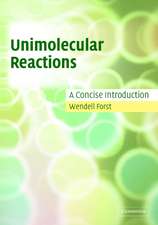Perspectives in Electronic Structure Theory
Autor Roman F. Nalewajskien Limba Engleză Paperback – 12 apr 2014
| Toate formatele și edițiile | Preț | Express |
|---|---|---|
| Paperback (1) | 819.84 lei 38-44 zile | |
| Springer Berlin, Heidelberg – 12 apr 2014 | 819.84 lei 38-44 zile | |
| Hardback (1) | 975.43 lei 43-57 zile | |
| Springer Berlin, Heidelberg – 25 mar 2012 | 975.43 lei 43-57 zile |
Preț: 819.84 lei
Preț vechi: 1078.74 lei
-24% Nou
Puncte Express: 1230
Preț estimativ în valută:
156.93€ • 170.51$ • 131.90£
156.93€ • 170.51$ • 131.90£
Carte tipărită la comandă
Livrare economică 16-22 aprilie
Preluare comenzi: 021 569.72.76
Specificații
ISBN-13: 9783642433115
ISBN-10: 3642433111
Pagini: 740
Ilustrații: XX, 720 p.
Dimensiuni: 155 x 235 x 39 mm
Greutate: 1.02 kg
Ediția:2012
Editura: Springer Berlin, Heidelberg
Colecția Springer
Locul publicării:Berlin, Heidelberg, Germany
ISBN-10: 3642433111
Pagini: 740
Ilustrații: XX, 720 p.
Dimensiuni: 155 x 235 x 39 mm
Greutate: 1.02 kg
Ediția:2012
Editura: Springer Berlin, Heidelberg
Colecția Springer
Locul publicării:Berlin, Heidelberg, Germany
Public țintă
ResearchCuprins
Sources.- Mathematical apparatus.- Basic concepts and axioms.- Hydrogen-like atom.- Approximating N-electron Schrödinger equation.- Wave function methods.- Density-Functional Theory.- Bonded subsystems and chemical bonds.- Concepts for chemical reactivity.- Adiabatic coupling between electronic and geometric structures.- Elements of information theory.- Schrödinger equation as information principle.- Electron probabilities as carriers of information in molecules.- Bonded atoms from information theory.- Molecular communication systems.- Orbital communication theory of the chemical bond.- "Thermodynamic" description.
Textul de pe ultima copertă
The understanding in science implies insights from several different points of view. Alternative modern outlooks on electronic structure of atoms and molecules, all rooted in quantum mechanics, are presented in a single text. Together these complementary perspectives provide a deeper understanding of the localization of electrons and bonds, the origins of chemical interaction and reactivity behavior, the interaction between the geometric and electronic structure of molecules, etc. In the opening two parts the basic principles and techniques of the contemporary computational and conceptual quantum chemistry are presented, within both the wave-function and electron-density theories. This background material is followed by a discussion of chemical concepts, including stages of the bond-formation processes, chemical valence and bond-multiplicity indices, the hardness/softness descriptors of molecules and reactants, and general chemical reactivity/stability principles. The insights from Information Theory, the basic elements of which are briefly introduced, including the entropic origins and Orbital Communication Theory of the chemical bond, are the subject of Part IV. The importance of the non-additive (interference) information tools in exploring patterns of chemical bonds and their covalent and ionic components will be emphasized.
Caracteristici
First monograph on alternative modern approaches to classical issues in chemistry.
Provides necessary tools for reader's own original research in the field.
Written for all experts in this field.
Includes supplementary material: sn.pub/extras
Provides necessary tools for reader's own original research in the field.
Written for all experts in this field.
Includes supplementary material: sn.pub/extras










